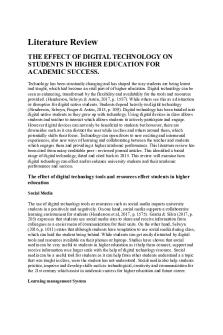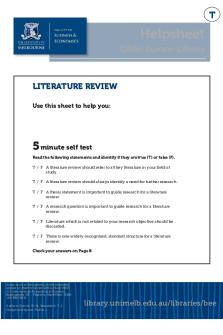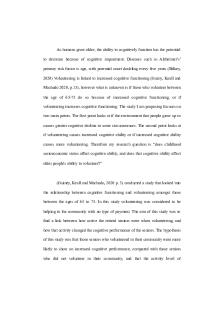childrens literature PDF

| Title | childrens literature |
|---|---|
| Course | Children's Literature |
| Institution | Western Governors University |
| Pages | 7 |
| File Size | 296 KB |
| File Type | |
| Total Downloads | 86 |
| Total Views | 142 |
Summary
childrens lit task 1...
Description
Grant Dittmer WGU Children's Literature February 6, 2021 Children’s Literature Task 1 Uegaki, C., & Jorisch, S. (2003). Suki's kimono. Toronto: Kids Can Press
B1. Suki’s Kimono shows diverse representations multiple times throughout the story. It begins by Suki wearing a kimono that was given to her by her Grandmother. Suki decided to wear the kimono on the first day of school. Despite her sister's disapproval, Suki would rather wear her favorite kimono instead of looking “cool”. Another example is when Suki arrived at school, she told the class about her summer. Suki explains how the kimono was a gift from her Grandmother. Suki then tells the class about how she wore the kimono at a festival and began to dance like the dancing girls from the festival. After dancing, the class began to applaud Suki. This story's diverse representation helps students understand the diversity of other cultures. Although Suki stood out from the crowd, her kimono was beautiful and appreciated by her teacher and classmates. This story is a good example for readers to respect, learn, and appreciate other cultures. B2. The main literary theme of Suki’s Kimono is the acceptance of others' diversity. The story displays the Japanese culture with the kimono, dancing, and festival. In the beginning of the story, some of Suki’s classmates laughed at her outfit. After explaining to the class the significance of the kimono and festival, Suki’s classmates were accepting and appreciative of Suki’s diverse background. B3.
It is extremely important for teachers to choose literature with quality illustrations. According to Galda, Liang, & Cullinan, students use illustrations to comprehend the story and to decode vocabulary. Also illustrations enhance the story by providing readers a visual of the story.
These illustrations demonstrate the main theme of diversity acceptance. Suki is wearing her kimono, sharing her experience at the festival, and dancing like the girls from the festival. Once she is done dancing, the teacher and students all begin to applaud her. They accept and applaud the fact that Suki is proud of her culture.
B4. The specific genre for this story is realistic fiction. One characteristic of this comes from the setting. The story mostly takes place at Suki’s school. Another characteristic of the realistic fiction genre is that the events happening in the story could occur in everyday life. For instance, when Suki decided to wear her kimono, her sisters told her “You can’t wear that… People will think you’re weird”. This is a realistic fictional event that occurred in the story.
General Information Lesson Title: Suki’s Kimono Subject(s): Language Arts Grade/Level/Setting: 2nd Grade general education classroom Prerequisite Skills/Prior Knowledge:
An important prerequisite skill for students is the ability to read basal readers.
Standards and Objectives State/National Academic Standard(s):
(8) Multiple genres: listening, speaking, reading, writing, and thinking using multiple texts-literary elements. The student recognizes and analyzes literary elements within and across increasingly complex traditional, contemporary, classical, and diverse literary texts. Learning Objective(s):
Given a test on Suki’s Kimono, students will correctly answer questions about the story with 80% accuracy. If they answer 8 out of 10, that would be 80%.
Materials
Technology
Graphic organizer Computer Smart board Suki’s Kimono Paper Pencil Rubric
To enhance the lesson I will use technology, specifically a computer and smartboard. I will present the new vocabulary words with images on the smartboard. This will help students have a visual representation to associate the new vocabulary with.
Language Demands Specific ways that academic language (vocabulary, functions, discourse, syntax) is used by students to participate in learning tasks through reading, writing, listening, and/or speaking to demonstrate their understanding.
Language Function(s):
Students will be able to analyze Suki’s Kimono and relate the story to their own lives.
Vocabulary:
kimono: Japanese robe with wide sleeves obachan: informal word for grandmother obi: kimono sash
somen: noodle taiko: Japanese drum Discourse and/or Syntax:
Groups of students will discuss the story and make connections to their own lives.
Planned Language Supports:
Vocabulary powerpoint with pictures, graphic organizer for vocabulary, bold text
Instructional Strategies and Learning Tasks
Anticipatory Set: Activity Description/Teacher
List key questions for students to discuss with a partner:
Why is it important to accept people's diversity?
How does it feel when someone judges you? Would you rather blend in or stand out?
After students share with a partner, the teacher will call on a few students to share their response with the class?
Student Actions
Students will respond to the questions and share with a partner. Then some students will be selected to share responses with the class.
Presentation Procedures for New Information and/or Modeling: Activity Description/Teacher
Student Actions
Students will watch the teacher's presentation of new vocabulary words while filling out the vocabulary graphic organizer. Students will also discuss the cultural meaning and origin of the vocabulary words with classmates.
Teacher will:
Give students a graphic organizer for vocabulary. Present PowerPoint presentation covering the new vocabulary words.
Discuss the cultural significance and origin of the vocabulary words with the class.
Guided Practice: Activity Description/Teacher
Introduce the story of Suki's Kimono to the class. Talk about the theme of diversity before reading.
Read the story of Suki's Kimono with the class. Use “popcorn reading” to have students participate in the reading.
Student Actions
Students will read Suki’s Kimono as a class using the popcorn reading method.
After reading, the students will break into groups to discuss the story and theme.
After reading, divide the class into groups and have the group discuss the story and theme.
Independent Student Practice: Activity Description/Teacher
Distribute the rubric for an independent writing assignment.
Discuss the assignment and rubric with the
Student Actions
Complete the writing assignment about the literary theme of diversity acceptance for Suki’s Kimono. Use the rubric as a guide for the writing assignment. Ask questions as needed.
class. Answer any questions students may have. Have students complete a writing assignment talking about Suki’s Kimono and the literary theme of diversity acceptance.
Walk around the class and help students as needed.
Culminating or Closing Procedure/Activity: Activity Description/Teacher
Have students complete an “exit ticket” answering the following questions:
Student Actions
Complete the “exit ticket” before exiting the classroom.
Why is it important to accept others' diversity? Why is Suki’s kimono so important to her?
Differentiated Instruction Consider how to accommodate for the needs of each type of student. Be sure that you provide content specific accommodations that help to meet a variety of learning needs.
Gifted and Talented:
The writing assignment is open ended which allows Gifted and Talented students to be as creative as they desire. EL:
Give English Learner students the new vocabulary the day before the lesson.
Students with Other Special Needs:
Allow students to have access to a large text copy of the story, designated reader, or an audio tape of the story.
Assessment Formative
The students will be given an exit ticket with a few questions to check student learning. Students will complete the exit tickets just before leaving class for the day.
Summative
Given a test on Suki’s Kimono, students will correctly answer questions about the story with 80% accuracy. If they answer 8 out of 10, that would be 80%.
References Galda, Lee, et al. Literature and the Child. Cengage Learning, 2015....
Similar Free PDFs

childrens literature
- 7 Pages

Childrens Literature
- 122 Pages

Childrens Literature Task 1
- 4 Pages

Childrens Literature Issues
- 6 Pages

Childrens Lit Task 1
- 10 Pages

ENGLISH LITERATURE
- 678 Pages

Literature Review
- 9 Pages

Literature Review
- 6 Pages

Literature Review
- 32 Pages

Fantasy Literature
- 3 Pages

Literature Review
- 10 Pages

Hiligaynon Literature
- 30 Pages

Literature Review
- 9 Pages

Literature Review
- 5 Pages
Popular Institutions
- Tinajero National High School - Annex
- Politeknik Caltex Riau
- Yokohama City University
- SGT University
- University of Al-Qadisiyah
- Divine Word College of Vigan
- Techniek College Rotterdam
- Universidade de Santiago
- Universiti Teknologi MARA Cawangan Johor Kampus Pasir Gudang
- Poltekkes Kemenkes Yogyakarta
- Baguio City National High School
- Colegio san marcos
- preparatoria uno
- Centro de Bachillerato Tecnológico Industrial y de Servicios No. 107
- Dalian Maritime University
- Quang Trung Secondary School
- Colegio Tecnológico en Informática
- Corporación Regional de Educación Superior
- Grupo CEDVA
- Dar Al Uloom University
- Centro de Estudios Preuniversitarios de la Universidad Nacional de Ingeniería
- 上智大学
- Aakash International School, Nuna Majara
- San Felipe Neri Catholic School
- Kang Chiao International School - New Taipei City
- Misamis Occidental National High School
- Institución Educativa Escuela Normal Juan Ladrilleros
- Kolehiyo ng Pantukan
- Batanes State College
- Instituto Continental
- Sekolah Menengah Kejuruan Kesehatan Kaltara (Tarakan)
- Colegio de La Inmaculada Concepcion - Cebu

